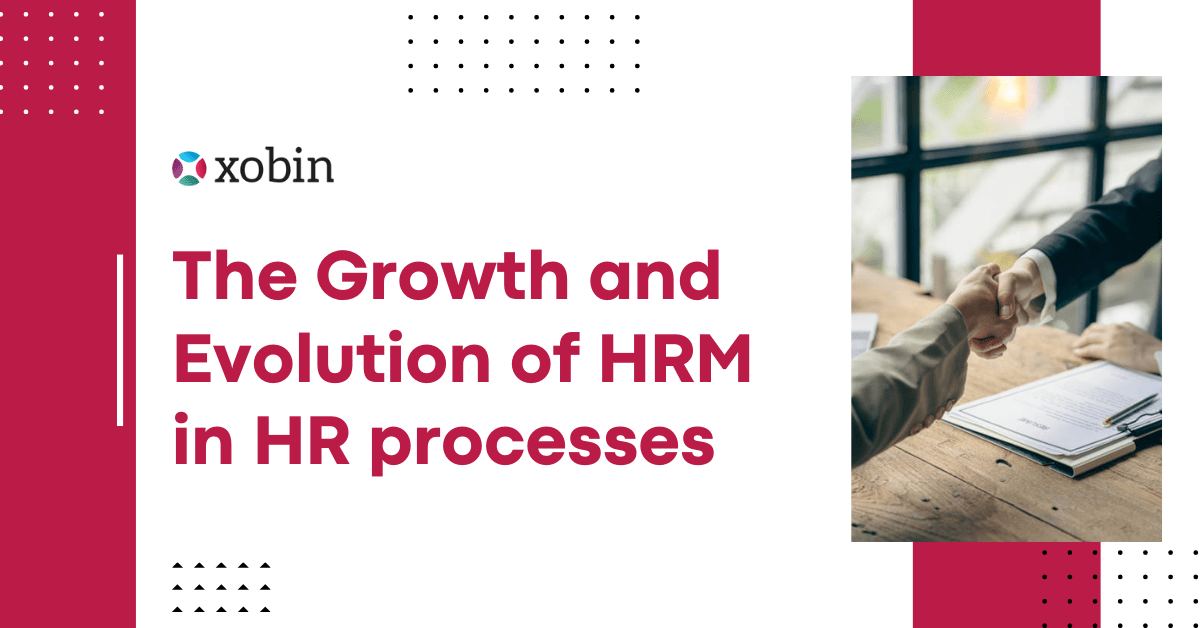The evolution of HRM has transformed the way organizations manage their workforce. What was once a simple administrative function has now become a strategic driver of business success. HRM is not just about hiring and payroll in today’s world, it is about talent optimization, employee engagement, and driving business growth. For recruiters and HR professionals, understanding the growth and evolution of Human Resource Management (HRM) is essential to stay ahead in talent acquisition and workforce management. This blog will take you through the history of HRM, how it has evolved, and what the future holds.
Table of Contents
What is HRM?
Human Resource Management (HRM) refers to the process of managing people in an organization to maximize their potential and align their goals with business objectives. Functions of HRM include such as recruitment, employee training, performance management, compensation, compliance, and workforce planning. HRM plays a critical role in ensuring a company attracts, develops, and retains the right talent. Over the years, its role has expanded beyond administrative tasks to focus on employee engagement, skill development, diversity, and company culture.
Evolution of HRM: Transformation of Human Resource Management
The Early Stages of HRM (Pre-1900s – 1950s)
Industrial Revolution and the Birth of Personnel Management
The Industrial Revolution (18th – 19th century) marked the beginning of formal workforce management. Before this period, businesses were small, and labor relations were informal. However, as industries expanded, companies required a structured approach to managing workers. During this era:
- Companies hired workers in large numbers for factory jobs.
- There were no formal HR policies, employers controlled wages and working conditions.
- Trade unions emerged to protect worker rights, forcing businesses to create basic employee management functions.
Personnel managers were responsible for ensuring compliance with labor laws and handling grievances. However, there was little to no focus on employee development, motivation, or engagement.
To address workforce concerns, businesses started creating basic personnel management functions. The primary role of personnel managers was to handle hiring, payroll, and employee grievances.
The Early 20th Century: Labor Laws and Worker Welfare
By the early 20th century, labor laws started gaining traction. Governments introduced policies to regulate working hours, wages, and employee welfare. This shift encouraged organizations to implement structured personnel departments. Key developments during this phase included:
- Companies hired workers in large numbers for factory jobs.
- There were no formal HR policies, employers controlled wages and working conditions.
- Trade unions emerged to protect worker rights, forcing businesses to create basic employee management functions.
The Personnel Management function gradually expanded to include employee relations and compliance with labor laws. However, there was still no focus on strategic talent management or employee engagement.
The Shift from Personnel Management to HRM (1950s – 1990s)
The 1950s -1970s: The Rise of HRM as a Strategic Function
By the 1950s, businesses started recognizing that effective human resource management could enhance organizational performance. Rather than just handling administrative tasks, HR professionals began focusing on employee motivation, skill development, and leadership training.
During this period key changes included:
- The introduction of a psychometric assessment test for hiring decisions.
- The growth of training and development programs for employees.
- HR departments began playing a role in organizational development and workforce planning.
The shift towards a people-centric approach led to the modernization of HRM, emphasizing employee engagement, performance management, and leadership development.
The 1980s -1990s: The Impact of Technology on HRM
By the 1990s, HRM evolved from an administrative role to a strategic function. Companies have started integrating HR practices into their business strategies to drive success. Notable trends:
- HR Information Systems (HRIS) were introduced to manage employee data efficiently.
- Computerized payroll systems automated salary management.
- Organizations began using data analytics to measure HR effectiveness.
These advancements set the stage for data-driven HRM, leading to today’s AI-powered hiring and workforce management solutions.
The Modern Evolution of HRM (2000s – Present)
The 2000s: HRM in the Digital Age
With the rise of the internet, the recruitment landscape underwent a significant transformation. Companies moved away from traditional hiring methods and adopted online job portals, applicant tracking system, and AI-driven pre-employment testing software. Significant transformations included:
Additionally, HR professionals started leveraging employee engagement strategies to improve workplace culture. As a result, organizations experienced higher retention rates and improved productivity.
2010s-Present: Data-Driven HR and AI in Recruitment
HRM in the modern era is defined by automation, artificial intelligence, and people analytics. Companies now rely on technology to enhance decision-making and improve hiring efficiency. Some of the most influential trends include:
- AI-powered recruitment tools for talent assessment
- Skills assessment tests to evaluate candidate potential accurately.
- Advanced AI proctoring to ensure fair assessments in remote hiring.
- Predictive analytics for workforce planning and turnover reduction.
- Personalized employee experiences using AI-powered engagement tools.
- Stronger focus on diversity, equity, and inclusion (DEI) initiatives.
With the rise of remote work, virtual hiring and online assessments became mainstream. Companies started using pre-employment skills assessment tools to identify top candidates efficiently.
The Future of HRM: What’s Next?
The future of HRM will be shaped by technological advancements, employee well-being, and personalization. Companies that embrace automation, AI-driven analytics, and data-driven workforce management will gain a competitive edge.
Emerging HRM Trends:
- AI-driven recruitment to improve hiring accuracy.
- HR chatbots for real-time employee assistance.
- Predictive analytics for workforce planning and talent retention.
- Remote hiring solutions to tap into global talent pools.
- AI-powered performance reviews for objective evaluations.
- Automation of HR workflows to reduce manual efforts.
- Mental health and wellness programs for better workforce retention.
As workplaces continue to evolve, HR professionals must stay ahead of these trends to attract, retain, and develop top talent effectively.
Adapt Modern HRM with Xobin!
The growth and evolution of HRM highlight how HR has transformed from basic personnel management to a strategic business function. Today, HRM is data-driven, tech-enabled, and focused on enhancing employee experience. At Xobin, we understand the challenges that recruiters and HR teams face in modern talent acquisition. Our AI-powered talent assessment software helps businesses:
- Online skills testing for unbiased recruitment.
- Conduct bias-free, data-driven hiring
- Improve candidate experience with seamless online assessments
- Automated ATS systems to simplify candidate tracking
- AI-driven proctoring features to ensure secure online hiring.
- Psychometric testing to evaluate behavioral and cognitive skills.
If you are a recruiter looking to enhance your hiring process, Xobin’s cutting-edge talent assessment software can help you make smarter hiring decisions.
Ready to experience the future of HRM? Book a personalized demo with Xobin today!






